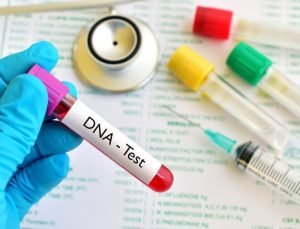Are you tired of searching for emergency dentistry services every time a dental mishap occurs? Whether it’s a broken tooth, severe pain, or bleeding gums; dental emergencies can happen anytime, anywhere. But don’t worry, we’ve got your back! In this ultimate guide to emergency dentistry, we’ll take you through everything you need to know about handling dental emergencies like a pro. From common dental emergencies and their causes to quick fixes and long-term solutions – we have it all covered! So, sit back, relax, and read on as we equip you with the knowledge and skills necessary to handle any unexpected tooth-related situation that comes your way.
What is an Emergency Dentist?
If you are experiencing pain in your teeth or you fear that you may have a toothache, it is important to seek medical attention as soon as possible. If the pain is severe, or if there is any sign of an infection, you should go to the emergency room immediately. In some cases, even a tooth that appears to be healthy can become infected if it is not treated promptly.
If you do go to the emergency room, be prepared for some invasive procedures. An Emergency Dentist will likely require you to have an X-ray and may require that you receive a dentist’s appointment as soon as possible so that they can take care of your tooth. In some cases, antibiotics may also be necessary.
Types of Emergencies a Dentist Can Help With
If you have a toothache that just won’t go away, or if you fear for your dental health in the event of an emergency, see a dentist. Here are some of the most common types of emergencies dentists can help with:
Tooth abscesses – If you experience tooth pain and swelling, see a dentist as soon as possible. A tooth abscess is an infection that can develop from bacteria trapped in the soft tissue around your tooth. Treatment typically includes antibiotics and surgery to remove the infected area of the tooth.
Tooth fracture – If you have severe pain when chewing or biting, it’s likely you have a fracture in one of your teeth. If so, don’t wait to see a dentist; they can set your jaw and ensure proper healing by inserting a metal plate and screws into the fractured area.
Tooth extraction – If decay or other problems prevent your teeth from being properly cleaned and treated, it might be necessary to extract them. This procedure involves removing all of the teeth within an affected area (including any attached gums) using special tools and techniques.
How to Find an Emergency Dentist
If you are in pain and cannot get to a dentist, there are steps you can take to find an emergency dentist.
Check with your local hospitals. Most will have a list of dentists who are available on short notice.
Contact your insurance company. Some policies provide dental coverage in cases of an emergency.
Search online. There are several websites that list emergency dentists. Look for a website that specializes in this area or one that is sponsored by your state dental association or the Israel Dental Association (IDA).
Look for dental clinics near you that offer walk-in appointments on short notice. Most clinics will be able to accommodate urgent patients who cannot wait for an appointment at a regular dentist’s office.
What to Expect from An Emergency Dentist Visit?
If you are experiencing pain in your teeth, or if you have any concerns about the health of your teeth, it is important to schedule a visit to an emergency dentist as soon as possible. An emergency dentist can diagnose and treat many dental issues in a short amount of time. Here are some things to expect during an emergency dentistry visit:
The emergency dentist will review your symptoms and examine your teeth.
If there is any damage to your teeth, the emergency dentist may need to remove some of them. They may also refer you for further treatment, such as root canal therapy or tooth extraction.
If you have cavities, the emergency dentist may fill them right away with a filling material called dental cement. If the cavity is large or has other problems, the emergency dentist may require additional procedures before they can fill it.
Dental Checklist for a Safe Emergency Dentistry Visit
To ensure a safe, pain-free emergency dental visit, follow these tips:
1. Arrive prepared. Have all of your personal information ready, including your insurance information and any previous dental records.
2. Wear comfortable shoes and clothing. Bring a hat, sunglasses, and sunscreen if you will be outside for any length of time.
3. Bring a copy of your health insurance card and proof of residence (mailing address, utility bills) to the appointment.
4. Let the dentist know if you have any allergies or other medical conditions that may require special attention during the procedure.
5. Make sure to drink plenty of fluids before the appointment and on the day of the appointment to avoid feeling thirsty or lightheaded during treatment.
6. Make sure you are aware of what is happening during the procedure so that you can ask questions and relay any concerns you may have.
Expect some discomfort following an emergency dental visit – this is normal and should only last for a short time. If it becomes too much to handle, talk to the dentist about possible relief options such as ice packs or medication administered through an IV drip. Advise family or friends to monitor the patient’s condition for a few hours following the dental visit.
Conclusion
If you have an unexpected dental emergency, don’t stress! Our comprehensive guide will teach you everything you need to know in order to get the care you need when it matters most. From selecting the right dentist for your needs to understanding how long a visit will take, we’ve got you covered. So, whether your tooth is about to fall out or a filling needs replacing, our guide has everything you need to know in order to make the best decision for yourself and your dental health. You can visit one of the best Dentists in Israel Herzliya for better experience.







Be First to Comment